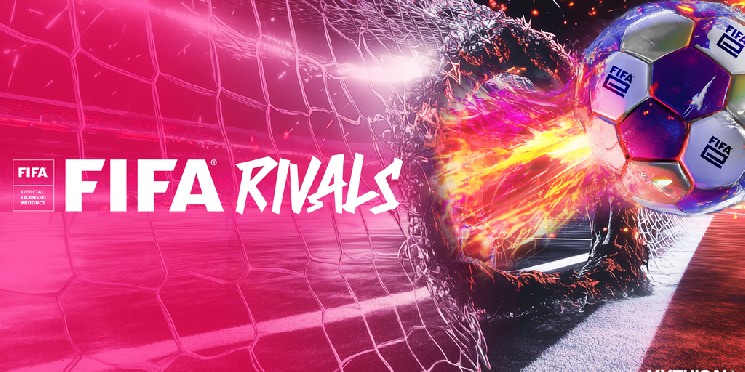FIFA Rivals: A New Era in Mobile Gaming
FIFA Rivals, the latest mobile blockchain game from developer Mythical Games, has officially launched on both iOS and Android platforms. Building on the success of their previous American football game, NFL Rivals, Mythical Games is confident that FIFA Rivals has the potential to make an even bigger impact in the gaming world.
The game comes with a multi-year licensing agreement with sportswear giant Adidas, allowing players to interact with Adidas-sponsored athletes like the legendary Lionel Messi. Collectible and tradable gear featuring these athletes adds a new level of excitement to the game.
John Linden, co-founder and CEO of Mythical Games, expressed his surprise at the overwhelming international popularity of soccer (or football). With over five billion potential consumers worldwide, the market for soccer games is massive compared to American football games. Linden believes that FIFA Rivals has the potential to be 20 times bigger than NFL Rivals, based on the sheer size and reach of the soccer fanbase.
The free-to-play nature of FIFA Rivals is expected to attract a wide audience, including casual players. With over 500 million downloads of EA FC Mobile on Android alone, the game is poised to reach a global audience. Partnerships with major brands and organizations, including a government body from a small country, highlight the widespread interest in FIFA Rivals.
Adidas is just the beginning of brand partnerships for Mythical Games, as Linden revealed that the studio has received interest from unexpected sources like telecom firms. The long-term contract with FIFA ensures that the game will continue to evolve, with plans to coincide with multiple World Cups in the coming years.
FIFA’s recent decision to migrate its NFT collectibles platform to its own Avalanche L1 blockchain aligns with Mythical Games’ use of the Mythos chain, a Polkadot-based gaming network. Collaboration between FIFA and Mythical Games on the Avalanche L1 blockchain is in the works, promising exciting developments for players.
Lessons learned from supporting NFL Rivals have informed the development of FIFA Rivals, with a focus on balancing the in-game economy and providing valuable assets for players. The upcoming third season of NFL Rivals will see enhancements in marketing, player interactions, and new game features.
As FIFA Rivals launches, Mythical Games plans to introduce an AI sports agent to guide players through their gaming journey. Esports competitions, club collaborations, and new game modes are also on the horizon, promising an immersive and engaging experience for soccer fans.
In conclusion, FIFA Rivals represents a new era in mobile gaming, combining the excitement of soccer with blockchain technology to create a dynamic and interactive gaming experience. With partnerships with major brands and organizations, as well as plans for future growth and development, FIFA Rivals is set to make a significant impact in the gaming world. Over the past decade, the field of artificial intelligence (AI) has seen exponential growth and development. From self-driving cars to virtual assistants, AI has become an integral part of our daily lives. One of the most exciting advancements in AI technology is the development of generative adversarial networks (GANs).
GANs are a type of neural network that consists of two networks – a generator and a discriminator – that work together to create realistic outputs. The generator network is responsible for creating new data samples, such as images or text, while the discriminator network evaluates the generated samples and determines whether they are real or fake.
The key innovation of GANs is their ability to generate data that is indistinguishable from real data. This has numerous applications in various fields, including image generation, text generation, and even drug discovery.
In the field of image generation, GANs have been used to create highly realistic images of objects, landscapes, and even people. This has implications for industries such as fashion, advertising, and entertainment, where high-quality visuals are essential.
Text generation is another area where GANs have shown promise. By training a GAN on a large corpus of text data, researchers have been able to generate coherent and contextually relevant text. This has applications in natural language processing, chatbots, and even content creation.
In the field of drug discovery, GANs have been used to generate new molecules that have the potential to be used as drugs. By training a GAN on chemical data, researchers can generate new molecules that have specific properties, such as the ability to bind to a certain protein or target a specific disease.
While GANs have shown great promise in a variety of fields, there are still challenges that need to be addressed. One of the main challenges is the potential for bias in the generated data. If the training data used to train the GANs is biased, it can lead to biased outputs that perpetuate existing inequalities.
Another challenge is the potential for malicious use of GANs, such as creating deepfakes or generating fake news. As with any powerful technology, GANs must be used responsibly and ethically.
Despite these challenges, the potential applications of GANs are vast and exciting. As researchers continue to refine and improve the technology, we can expect to see even more groundbreaking applications in the future. Whether it’s creating realistic images, generating text, or discovering new drugs, GANs have the potential to revolutionize the way we use AI in our daily lives.

